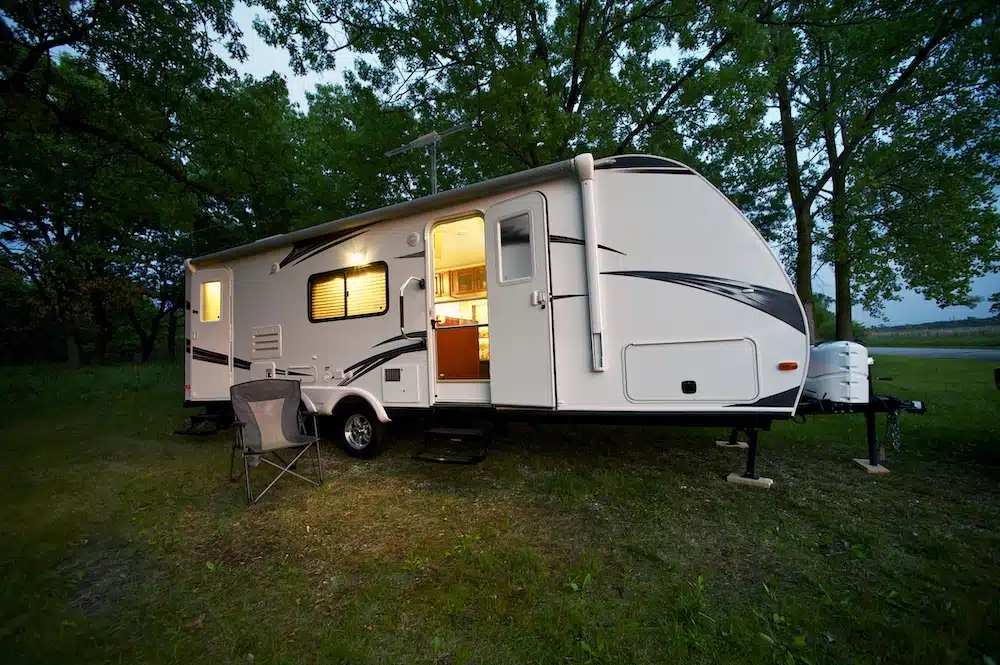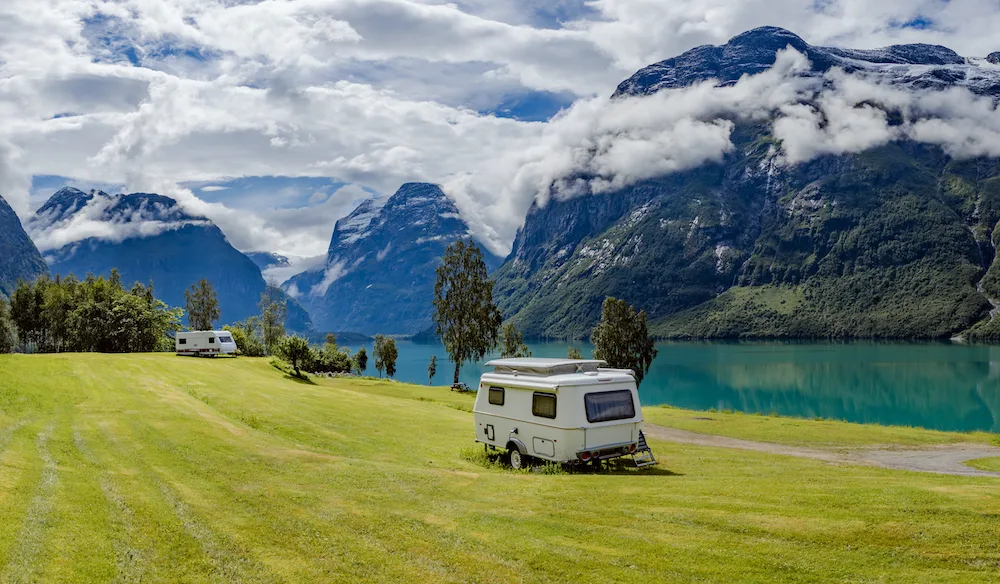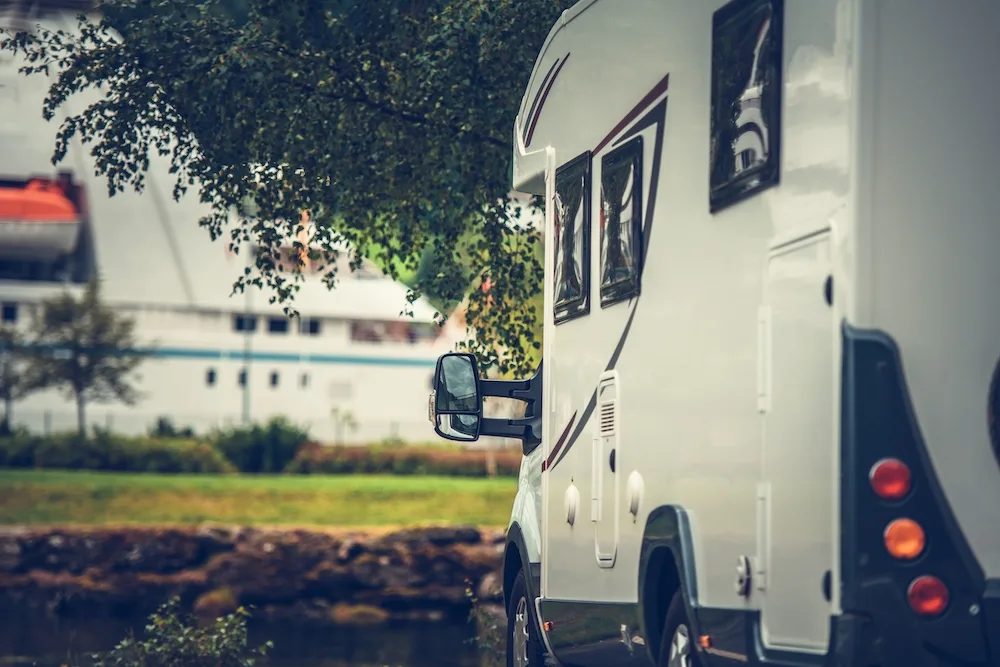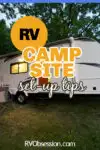Tips for setting up your RVing campsite
There are all sorts of different ways to set up an RV campsite, and what works best for you will depend on your own personal preferences and needs.
If you’re boondocking (free camping, moochdocking, freedom camping or going off grid… there are many different names for it!) you’ll likely be able to pick whichever spot you like.
These RV campsite setup tips will help… especially if you’re new to RVing.

Here are some ideas to get you started:
- Choose a level spot: This is especially important if you’re using a pop-up or tent trailer, as an uneven surface can make it difficult to set up and take down your RV. Look for a spot that’s relatively flat and free of any large rocks or roots that could trip you up.
- Pick a shady spot: If possible, try to find a campsite that’s at least partially shaded. This will help keep you cool in the summer months and protect your RV from the harsh rays of the sun.
- Make sure you’re close to amenities: If you’re camping with kids or elderly family members, it’s important to make sure you’re close to bathrooms and showers (if there are any). You may also want to be close to a playground or other activities if your campsite is located in a campground.
- Consider your surroundings: When choosing a campsite, it’s important to take into account your surroundings. If you’re camping near a busy road, for example, you’ll want to make sure your RV is parked in a spot that’s far enough away from the traffic noise.
Also, be mindful of other campers around you; if they’ve got kids or dogs (which you may find too noisy) or the smoke; you might want to move a little further away from them if possible. - Park for the view or privacy – consider how you park your vehicle so that you can maximize your view (if it’s nice). Or if you’d like to create some privacy for your outdoor space, park your RV so that it can provide a buffer between you and other campers.

- Choose a spot that’s easy to get in and out of: If you’re going to be coming and going from your campsite frequently, you’ll want to make sure it’s easy to get in and out of. Look for a spot that has ample space for parking and turning around, and make sure the entrance is clear of any obstacles.
- Bring along some outdoor gear: If you’re the type of person who enjoys spending time outdoors, be sure to bring along some camping gear like a tent, a set of hiking sticks, and a fishing rod. This will allow you to take full advantage of your surroundings and explore the area around your campsite.
- Make sure you have enough storage space: If you’re going to be staying in your RV for an extended period of time, it’s important to make sure you have enough storage space. Otherwise, you’ll quickly run out of room to store your belongings. Consider purchasing a storage container or investing in a few extra shelves for your RV.
- Stay safe and secure: When camping, it’s important to take safety and security into consideration. Make sure you have a good locking system for your RV, and always keep your belongings locked up when you’re not using them. You may also want to consider investing in a portable wireless security system for added peace of mind.

There are endless possibilities when it comes to setting up an RV campsite. By taking your time to plan and prepare, you can ensure that your campsite will be comfortable, convenient, and safe.

